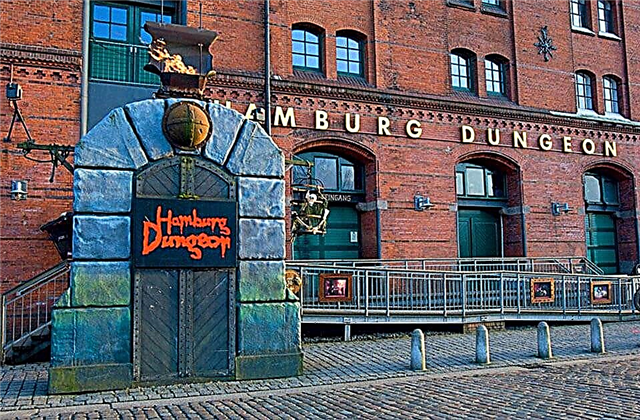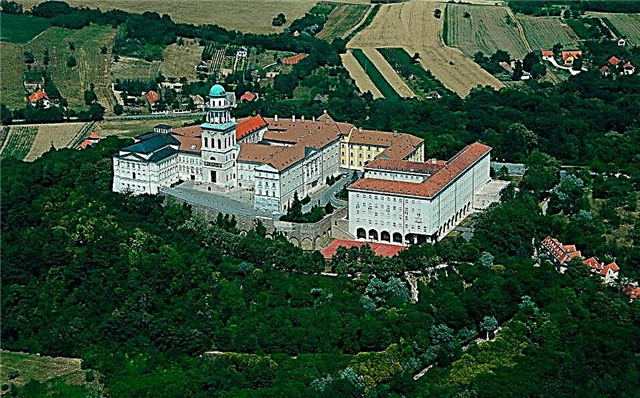Address: Italy, Venice, St. Mark's Square
Start of construction: 1496 year
Completion of construction: 1499 year
Architect: Mauro Koducci
Coordinates: 45 ° 26'05.1 "N 12 ° 20'20.2" E
Content:
Short description
One of the most beautiful cities in Europe, Venice, can hardly disappoint a tourist.
A unique and unlike any other city on the water in the world, it was and, today is a real source of inspiration for many artists, writers and poets. Throughout the year, more than three million travelers from all over the world come here to see with their own eyes the beauty of this mysterious city, whose foundation date goes back to the 400th year of our era.

View of the Clock Tower from the Campanile of St. Mark's Cathedral
Taking a walk or boat trip in Venice, you can see many beautiful architectural buildings around you, among which the Palazzo Santa Sofia, Campanila, the Doge's Palace, numerous bridges and canals should be noted. Admiring all this beauty, created by man and nature at different times, the inexorable passage of time becomes imperceptible. However, there is a building on Piazza San Marco that constantly reminds the visitor of the city not only about hours, minutes, but also about seconds. Of course, this causes some regret, but as the saying goes "ce la vie", such is life and you can't get away from it. The building, which will be discussed in more detail below, is the famous Clock Tower of San Marco in Venice - Torre dall 'Orologio.
Clock Tower of San Marco: history of construction
The Clock Tower, which many simply call San Marco, was built by the architect Mauro Koducci at the end of the 15th century.... A lot of time has passed since then. It made its own adjustments: more than once restoration work was carried out, individual elements and superstructures were added to the building, changes were made to the clockwork. The Clock Tower in Piazza San Marco is rightfully one of the most recognizable sights of the Italian “city of lovers”, and its history will be interesting for many travelers who set out to get to know “Serene”.

View of the Clock Tower from St. Mark's Square
The place where the Clock Tower is located today was not chosen for construction in the distant 1496-1499 by chance. It was from here, according to the architect's idea, that the clock would be visible from the coastal waters of the Adriatic Sea, and it was they who were supposed to demonstrate the wealth and power of Venice to all guests of the city who descended on its shore. For the 15th century it was a real miracle, because if today anyone can buy a watch according to their preference, then not even every city could acquire such a clock mechanism. Time was measured in a banal way: the rising sun is morning, and its sunset is evening.
Clock Tower: visual appeal
The building is a clock tower and lower annexes adjoining it on both sides. The first and second floors of this architectural structure form a monumental arch, passing under which you can find yourself on the main street of the city of Merceria, connecting Piazza San Marco (where the political and religious centers are located) and the historic quarter of Venice - Rialto center). Many historians, studying the origin of the Clock Tower, believe that Mauro Koducci did not just connect the arch and the main street of the city. There is even an opinion that he borrowed a similar idea for the project from the work of Alberti "On Construction", in which the latter described in detail how important such a tower is for a European city.

Tower facade
It is not known for certain who was the creator of the bronze sculptures that adorn the Clock Tower, but it is believed that it was most likely done by the master Antonia Rizzo. An interesting fact is that no money was spared for the construction of city clocks and their decoration: for example, gold leaf and ultramarine (!) Were widely used during the construction. An architectural composition is installed on the flat roof of the Clock Tower, consisting of figures of two Moors, who are called upon to strike the bell with hammers, beating off the clock, its halves and quarters. The bronze architectural composition by Amoroggio della Ankore (1497) is two people in skins: a young and an old one.
They symbolize time as measured by human life. Over the centuries and due to the negative influence of the environment, the figures turned black, after which they received their nickname "Moors" ("mori"). A winged lion is installed under the Moors, symbolizing the evangelist Saint Mark. By the way, the lion is also the coat of arms of Venice.... For this reason, in the city on the water you can see quite a lot of images of a predator. According to legend, the king of beasts, in whose paws the open Bible, symbolizes peace and tranquility, while the figure of a lion with a closed Gospel is a declaration of war. But the image of a lion, the front legs of which are on land, and the hind legs are lowered into the water, suggests that Venice is the main one on land and on water.

Clock on the tower
Below the coat of arms, travelers can see a small niche in the center of which sits the Madonna and Child, made of gilded copper. There are doors on the left and right sides of it. They are open only a few days a year (on the day of the solemn feast of the Ascension and the week following it) so that the figures of the Magi can "pass" by the Mother of God and bow to her and the Savior of all mankind.
The dials of the Venetian Clock Tower
The centerpiece of the Clock Tower in Venice is, of course, the aqua-colored round dial with a globe in the middle. Created by Father Gianpaolo and his son Giancarlo Ranieri more than 500 years ago, they still signal the city of the inexorable passage of time today. Some tourists call this creation of the masters unique and one of a kind, but the father and son of Ranieri made similar watches in their own time in their hometown of Padua. It is also curious that in addition to hours and minutes, the clock on the tower shows the change of seasons and the position of the Sun relative to the signs of the zodiac, as well as the phases of the moon. The beautiful design of the hour disc cannot leave any traveler indifferent, as evidenced by the admiring glances of passers-by directed upwards and exclamations of surprise spreading around the neighborhood.

Hand on the clock
It is also interesting that there is also a dial on the back of the Clock Tower, showing the time to all those who walk in the direction of Piazza San Marco... This is a simple watch, although it is huge in size. The dial is surrounded by a marble rim: it shows the time in 12 and 24 hour format. Surprisingly, only one solar hand is set in motion on it by the clockwork.
Clock Tower: a note to tourists
Many travelers may wonder: "Is it possible to see this ancient clockwork from the inside and admire the panoramic view from its terrace?" Indeed, it will be interesting for many to visit, especially if you remember the time when the Clock Tower was erected. Today, excursions are held here (it is forbidden to climb on their own), and experienced guides, accompanying tourists along the steep and narrow stairs to the tower's terrace, tell about the ancient clockwork in several languages (Italian, French and English).

View of the roof of the clock tower with a bell and two moors
Although it should be noted that such excursions are conducted only 4 times a day, and no more than 12 people are recruited into groups. The lucky ones are only those who managed to book a "time travel" in advance.











